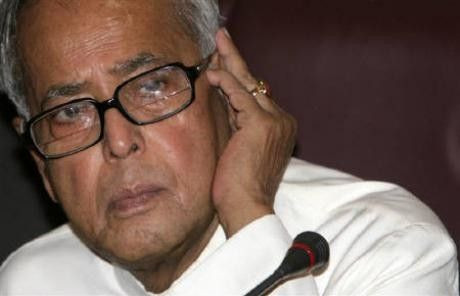Pranab unveils budget, to bring in food bill for poor

The finance minister announced on Monday a food security bill for 2011/12, a measure that would provide cheap grains for millions of poor but which has sparked worries of a huge fiscal cost.
It was one of the first signs of populism in the annual budget as Prime Minister Manmohan Singh confronted high prices and corruption scandals as well as elections in five states this year.
In his ongoing budget speech, Finance Minister Pranab Mukherjee dismissed fears of policy drift and announced incentives for private investment in infrastructure as well as moves to help agricultural productivity to sustain economic growth and lower inflation.
The minister raised the foreign investment limit in corporate infrastructure bonds by $20 billion. Mukherjee also said infrastructure debt funds would be created.
Certain events in the past few months may have created an impression of drift in governance and a gap in public accountability, Mukherjee told parliament in what is widely expected to be a populist budget.
Such an impression is misplaced.
In a pilot move, the minister said some subsidies for food and fuel would be directly given as cash to customers starting in March, a move aimed at making the subsidies system more efficient with less waste.
Analysts say it was unlikely that the government will unveil any politically-sensitive reforms in the budget for the fiscal year starting in April.
The government is expected to count on a robust economy to expand revenue in the absence of big one-time gains that it enjoyed in the current year from the sale of 3G telecom licences. Mukherjee said he expected the economy to grow 9 percent in 2011/2012 and for inflation to ease.
It is also expected to withdraw more of the stimulus that helped India weather the global economic downturn.
Asia's third-largest economy is on track to grow at 8.6 percent in the current fiscal year that ends in March. A new government survey has forecast economic growth of about 9 percent for the next fiscal year.
The economy grew a slower-than-expected 8.2 percent in the October to December quarter from a year earlier, government data on Monday showed. The median forecast in a Reuters' poll was an annual rise of 8.6 percent.
Reform measures, such as liberalising foreign investment in multi-brand retail and setting out a definitive roadmap for a nationwide goods and services tax, may need to wait for a more receptive political climate.
The move on corporate bonds helped the rupee strengthen to 45.21 per dollar from 45.25 per dollar. The BSE Sensex extended gains to more than 1 percent during the start of his speech.
The moves to bolster development of infrastructure were expected. Inadequate power, roads and other infrastructure act as bottlenecks to growth and push up costs.
DEFICITS AND SUBSIDIES
On Friday, a government survey forecast a fiscal deficit for the current fiscal year of 4.8 percent of GDP -- far better than the 5.5 percent target, thanks to $23 billion in telecom licence revenue and a surge in growth that boosted tax receipts and enabled higher-than-budgeted spending.
The survey forecast a fiscal deficit of 4.8 percent for the next fiscal year. Some economists say the figure is optimistic given the absence of one-time gains from the telecom licence sales and the prospect that India's subsidy burden could swell if oil prices stay above $100 per barrel and New Delhi continues to subsidise diesel and cooking fuels.
Some economists also expect a slowdown in growth in the new year, which would make the deficit target harder to reach.
New Delhi is likely to announce plans to borrow about 4.5 trillion rupees ($99.3 billion) from the bond market in the new fiscal year, roughly in line with the current year's borrowing, a Reuters poll found.
India is in a bind over inflation, which has prompted street protests and drawn criticism from the opposition. Food and fuel subsidies are popular with voters and help offset inflation but add to fiscal burden.
Deutsche Bank forecast subsidies in the current fiscal year would reach 2.5 percent of GDP, above New Delhi's target of 1.8 percent. It expects the subsidy burden in the next fiscal year ending in March 2012 to rise to 3 percent of GDP.
© Copyright Thomson Reuters 2024. All rights reserved.


















